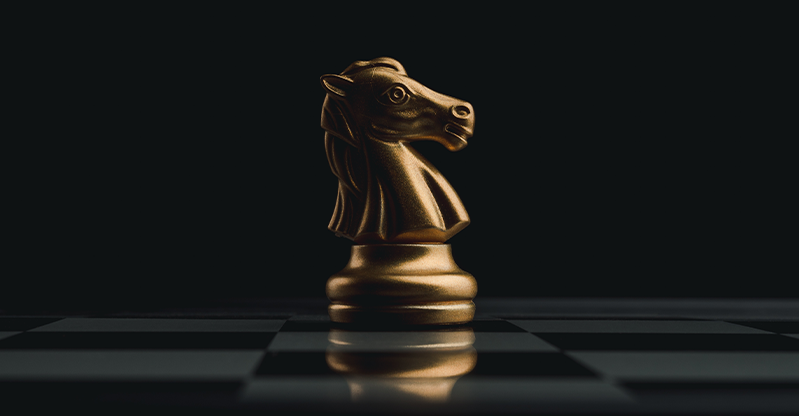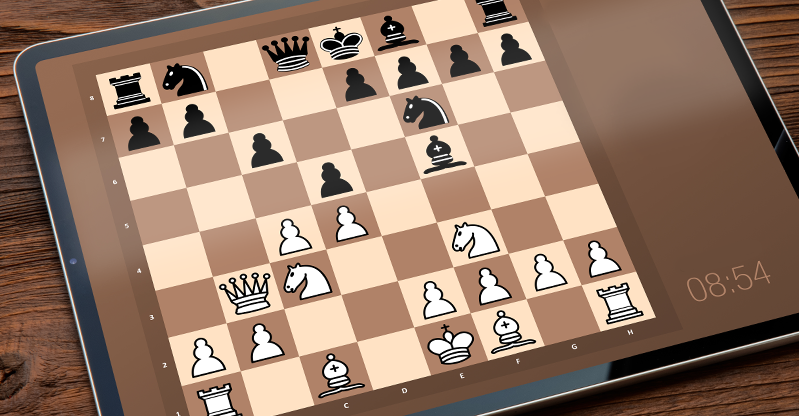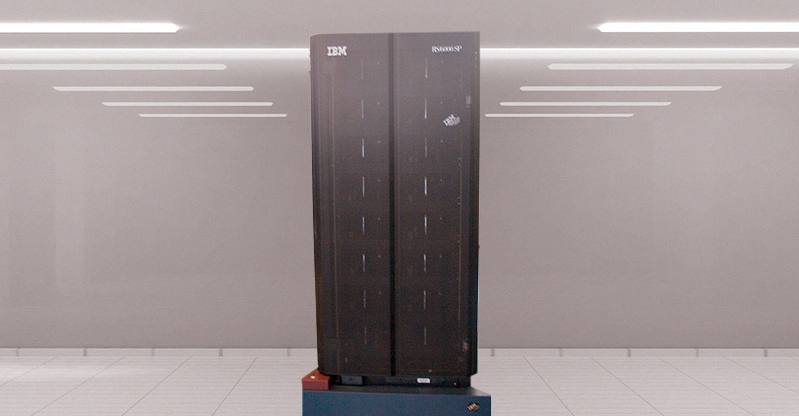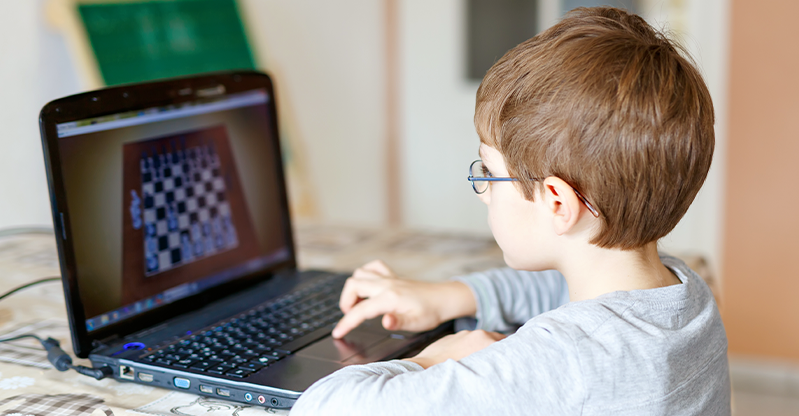Forget the Rumble in the Jungle. The single most significant sporting event in the 20th century was not between two heavyweight boxers pounding each other into oblivion. It wasn’t a contest of raw strength and agility or physicality.
It was a battle of the mind and brain. A battle between wits and intelligence. Although not as famous as Muhammed Ali and George Foreman’s mighty match in the Congo, Kasparov vs. Deep Blue’s second tournament-style confrontation was truly the match of the century. That’s because it was about Man and his ability to think strategically vs. a machine’s ability to do the same.
The greatest of us at the time in the field of chess, a highly intellectual game — and yes, widely considered a sport, a mental one albeit, especially when going by tournament conditions — would go head-to-head with the finest supercomputer ever developed for chess. The reigning world chess champion vs. AI at its finest.
Who would win?
The end result: Kasparov did. He won the match, though losing one of the six games, which said much of computers’ increasingly powerful abilities to compete with humans. However, we remained dominant over them.
But that wasn’t the end of the story. A second match was played in the dying days of the last century. And this time, the competition would show that everything in our world was about to change. Forever.

A brief history of chess-playing programs
Chess-playing programs (what we’d call apps today) had been around for a long time. The first one ever created was in 1951. It was made for the Ferranti Mark 1 but had severe limitations: it could only complete a game two moves away from checkmate.
The first complete chess-playing program that could run on a computer from opening move to checkmate was for the IBM 704 mainframe. It was slower than a turtle in making a move. So slow that if it went any slower, it would be going backward in time. Eight whole minutes a turn.
Since then, there were various other programs, but none sophisticated enough to beat a decent player who took the match seriously. Of note, The Chessmaster 2000 game came out in 1986 for the Amiga, Commodore 64, and MS-DOS-based PCs. It featured decent graphics, and its engine allowed it to be a strong enough opponent against the average player. Still, it and many forthcoming chess programs were no match for professional chess players.
Chess programs right up to the 90s couldn’t beat chess grandmasters. We see it as a simple matter of computational ability. Specifically, in chess, the AI couldn’t calculate or prepare for traps, tricks, and other strategies as successfully as those done by grandmasters.
This all changed in 1996.

What was Deep Blue?
Deep Blue was a supercomputer expert system. Briefly, an expert system is an artificial intelligence that mimics the decision-making behavior of humans. Specifically, experts in a field of some kind. They’re designed to solve problems through bodies of knowledge — rather than procedural code, they perform an if, then a way of operating.
For instance, if a particular situation is encountered, an expert system would rely on the body of knowledge to react. A chess example of this would be if the system’s queen was threatened along with its bishop. It would know sacrificing the bishop is better than sacrificing the queen. This is because it understands that the queen is a more valuable piece in the game. So, if its queen is threatened along with its bishop, then it moves its queen out the way.
At the time, Deep Blue was primarily designed as an expert system for chess by IBM. As no program had beaten a grandmaster before, mainly because any computer being used didn’t have the computational power, IBM designed Deep Blue specifically for the task.
Being a supercomputer meant it was considerably more complex than computers for the average consumer and thus was capable of enormous feats. For instance, supercomputers are built for functions far outside the scope of even the top desktop computers of this day. The complexities that supercomputers deal with include weather prediction. They process gargantuan amounts of information as even a tiny starting condition can significantly affect the weather. This, incidentally, is known as the butterfly effect.
But now, onto the main events!

Kasparov vs. Deep Blue, Match 1
Kasparov, reigning world champion at the time, took up the challenge IBM had laid before him. It would be played according to international tournament rules, which determine a professional chess player’s worldwide ranking and who the grandmasters were — along with the finest chess player of the time.
Tournament conditions consist of a match between competing opponents that are six games in total. There is also time pressure added as a component of the competition. Each player has a set amount of time for play, and when it’s that player’s turn, their clock runs down. If it hits zero, they automatically lose the game. The world standard for chess tournaments is 90 minutes for each player.
It sounds like a lot, but as the mid-game gets incredibly complicated, time is consumed quickly as players carefully try to weigh their best possible move to avoid landing in a compromised endgame. It is not uncommon for even great players to wind up in time trouble nearing or in the endgame, causing them to make mistakes that cost them the game.
Kasparov, as a grandmaster, was expected to win the match easily. And Kasparov did win. Just not as much of a whitewash as might have been expected. He lost one of his six games, drew two others, and won three. That a grandmaster lost a single chess game to a computer had never happened before. The match, played in Philadelphia in 1996, showed for the first time that AI developments were catching up to raw human computational power.

Kasparov vs. Deep Blue, Match 2: the final confrontation
IBM, undeterred, made improvements to their Deep Blue computer. So, they rechallenged Kasparov, who agreed to a rematch. This time, it took place in New York in 1997, a time when the cellular phone was starting to become widespread, and technology was beginning to ramp up to a brave new world of the 2000s.
The match’s final outcome was 3 ½ for one of the players and 2 ½ for the other. You may be wondering why the ½ points. If there is a draw in chess tournament conditions, both players receive a ½ point. Most of the games in this match were draws.
THE FIRST GAME:
Kasparov won after 45 moves. Later it was found that there was a bug within Deep Blue that caused it to not process a critical decision in a vital part of the game. It then instead defaulted to a “fail-safe” move. This possibly cost it the game. 1 point to Kasparov.
THE SECOND GAME:
This was a very hard-fought game, but Kasparov was eventually forced into a position where he realized he would be cut down chessman by chessman until being inevitably checkmated by Deep Blue. Rather than stretch out an unwinnable game, he resigned. 1 point to Deep Blue.
THE THIRD GAME:
Kasparov decided to gamble by playing an irregular opening of this game. He hoped that Deep Blue, as an AI, wouldn’t have the intuition to avoid making certain mistakes later on. This didn’t work: the AI was perfectly capable of countering Kasparov’s bid. After a tight game, Deep Blue was able to force a draw. ½ points for both players.
THE FOURTH GAME:
Kasparov was, possibly, very desperate for a clear victory rather than another draw. So, he spent a considerable amount of time analyzing his possible moves to counter Deep Blue. This didn’t give him the edge he needed to push Deep Blue into a weak position. Instead, it got him into time trouble. Remember, each player is allocated 90 minutes, the clock ticking down on their turn.
Suddenly realizing he was in danger of losing the game by default, he made moves with great haste. He was lucky this didn’t cost him the game. On the other hand, he was unable to force a victory. This resulted in another draw—½ points for both players.
THE FIFTH GAME:
This game may have been the most exciting of the match. Kasparov played hard, and at one point, it looked like victory was certain for him, which could have resulted in winning the match. His mid-game was spectacular, and he pushed Deep Blue into a weak position. But chess experts were impressed by Deep Blue’s stunning endgame. This forced the game into yet another draw—½ points for both players.
THE FINAL GAME:
Up to this point, both players were scored at 2 ½ each. Now was the moment of truth. Would this game end in a draw, like many of the others? Or would Kasparov once again prove he, as a man, was superior to a machine?
The first thing to note was that this game was a miniature. In chess terms, this means a game concluded in 25 moves or less. Usually, the reason for this in tournaments against expert players is because of what is called a brilliancy. As you’d expect, the definition is a brilliant, beautiful, and bold stratagem that blows away the opponent’s defense.
Kasparov started the game by forming a tight defensive position. Possibly he intended to pick off Deep Blue’s chessmen in the mid-game while retaining his most essential pieces. In other words, employing siege-like gameplay to weaken the other player considerably to ensure the endgame didn’t end in a draw.
But he wasn’t the one who unleashed the brilliancy. Unfortunately for him, Deep Blue executed a series of stunning moves that started by sacrificing one of its knights. This compromised Kasparov’s carefully laid out defense. Soon, Kasparov was in trouble, and seeing no way out, he resigned. All this within the first 20 moves of the game. 1 point to Deep Blue in a match with three wins and three draws.
In the end, the score was 3 ½ – 2 ½ to Deep Blue.
History was made. Man’s creation had surpassed him in a game previously thought not to have been possible to do so. This was also the dawning of a new area of computational technology, specifically how technology was increasingly becoming more micro. Just over ten years later, the first smartphone was released. And our whole world changed.
Today, Deep Blue is not what it used to be
The computation power and AI learning of Deep Blue, powerful as it was in 1997, is a pittance compared to today’s averagely priced laptop. And most people’s Samsung Galaxies and iPhones have the raw power to trounce Deep Blue if they have the right chess app. In fact, AI has developed at such a pace that predictions about where we’ll be in 20 years is anybody’s guess.
If you want your child to be part of that future, consider enrolling in one of our courses today through the following links. Because chess is still great for all kinds of mental stimulation and thinking. And learning to program has never been as crucial as it is now because making apps and programming computers is the direction our world is going. After all, if your kid isn’t in the STEAM space and doesn’t have coding knowledge, in the future, it could be checkmate.









